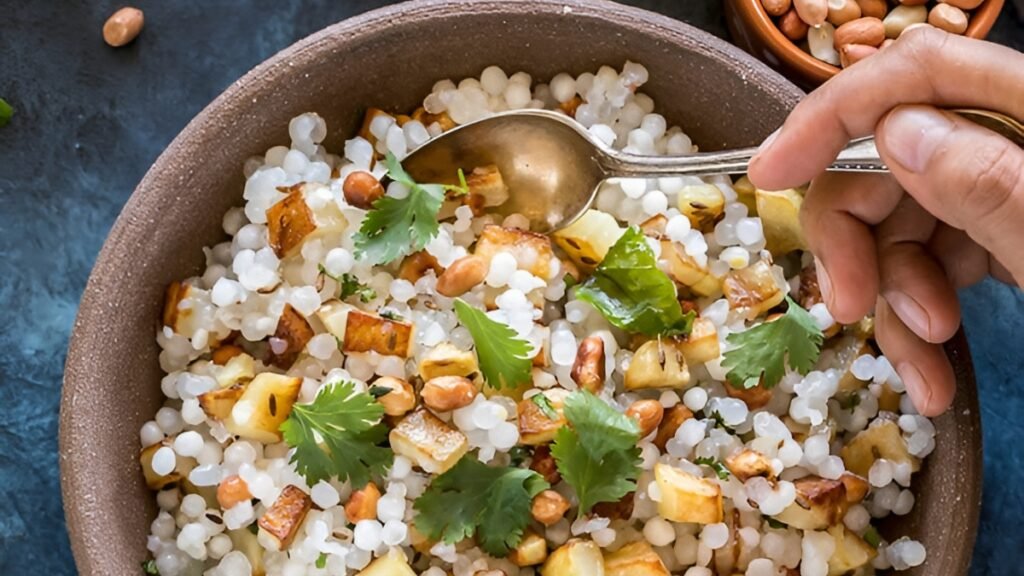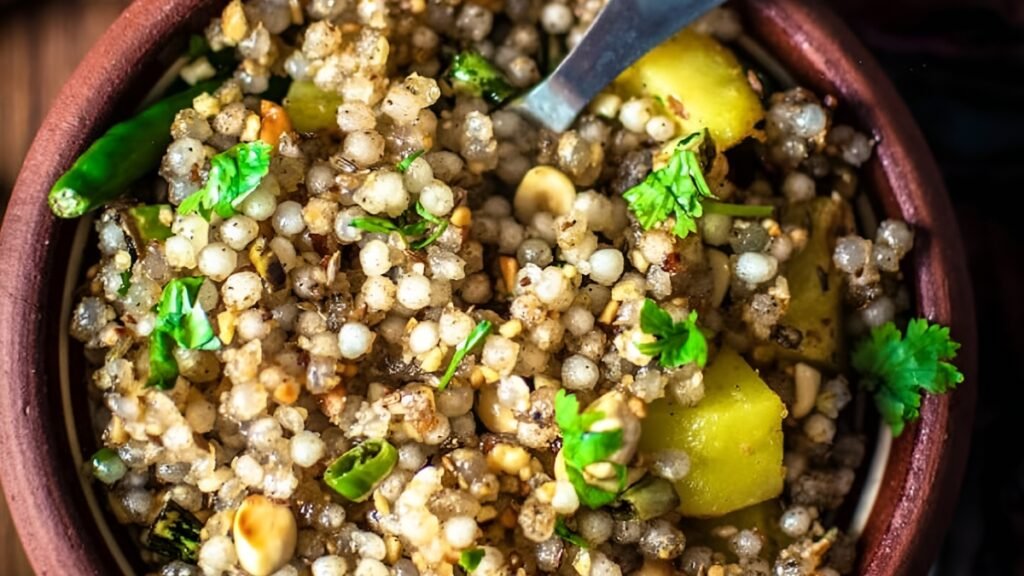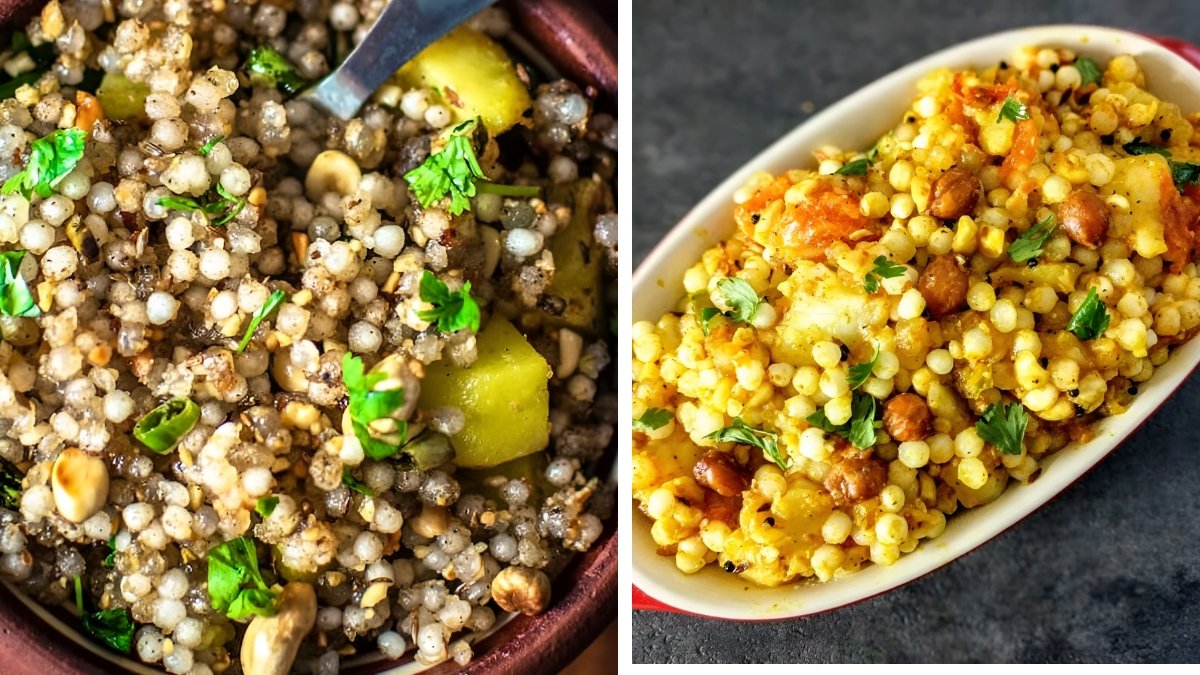Sabudana khichdi isn’t just a fasting food anymore it’s a comfort dish loved across India. Traditionally made during Navratri or Ekadashi, this tapioca pearl-based recipe has evolved into a wholesome breakfast or light dinner option. Adding vegetables makes it even more nutritious and colorful, turning a simple dish into a satisfying meal.
It’s gluten-free, easy to digest, and packed with flavor when done right. Plus, it’s quick to make once you’ve soaked the sabudana properly.
How Vegetable Sabudana Khichdi Works – Explained Simply

Sabudana (also called sago or tapioca pearls) is the star of this dish. When soaked, it becomes soft and chewy, absorbing flavors beautifully. The khichdi is usually stir-fried with cumin, green chilies, boiled potatoes, and roasted peanuts. By adding vegetables like carrots, capsicum, and peas, you boost the fiber and vitamin content without losing the traditional taste.
The key is to balance texture sabudana should be soft but not sticky, and veggies should be cooked but still have a slight crunch.
Best 6 Steps to Make Vegetable Sabudana Khichdi at Home
Here’s a simple 6-step guide to make about 2 servings. Total prep and cook time: around 45 minutes.
Step 1: Soak the Sabudana
Take 1 cup sabudana and rinse it thoroughly. Soak it in water (just enough to cover) for 5–6 hours or overnight. After soaking, drain any excess water and fluff the pearls with a fork. They should be soft and separate easily.
Step 2: Prep the Veggies
Chop ½ cup carrots, ½ cup capsicum, and ¼ cup green peas. Boil or steam them lightly so they’re tender but not mushy. Also, boil and cube 1 medium potato. Keep everything ready before you start cooking.
Step 3: Roast the Peanuts

Dry roast ¼ cup peanuts until golden. Let them cool, then crush them coarsely. This adds crunch and a nutty flavor that’s essential to sabudana khichdi.
Step 4: Temper the Spices
Heat 1 tablespoon ghee or oil in a pan. Add 1 teaspoon cumin seeds and 2 chopped green chilies. Sauté for a few seconds until fragrant. You can also add curry leaves for extra aroma.
Step 5: Add Veggies and Sabudana
Add the boiled vegetables and potatoes to the pan. Stir for a minute, then add the soaked sabudana and crushed peanuts. Sprinkle salt and a pinch of sugar. Mix gently and cook on low flame for 5–7 minutes until sabudana turns translucent.
Step 6: Finish and Serve
Turn off the heat and squeeze in some lemon juice. Garnish with chopped coriander leaves. Serve hot with curd or enjoy it plain it’s delicious either way.
Common Mistakes With Sabudana Khichdi and How to Avoid Them

- Sticky sabudana: Happens when you soak it in too much water. Use just enough to cover and drain well.
- Undercooked pearls: If sabudana looks white and opaque, it needs more cooking time.
- Soggy veggies: Steam or boil them lightly to retain texture.
- Skipping peanuts: They add crunch and flavor don’t leave them out.
What’s Inside a Perfect Vegetable Sabudana Khichdi – Quick Table
| Ingredient | Role in Dish | Texture Goal |
|---|---|---|
| Sabudana | Base | Soft, non-sticky |
| Boiled Potato | Adds body | Tender, not mushy |
| Mixed Vegetables | Nutrition & color | Slightly crunchy |
| Peanuts | Flavor & crunch | Coarsely crushed |
| Cumin & Chilies | Aroma & spice | Lightly sautéed |
Conclusion: Why You’ll Love This 6-Step Recipe

Vegetable sabudana khichdi is a flavorful twist on a classic dish. It’s easy to make, filling, and perfect for both fasting days and regular meals. With just six steps, you can whip up a healthy, tasty plate that’s light on the stomach but rich in flavor. Once you get the soaking right, the rest is a breeze.
FAQ: Quick Answers About Vegetable Sabudana Khichdi
What’s the ideal soaking time for sabudana? 5–6 hours is usually enough. Overnight soaking works best for soft, non-sticky pearls.
Why does sabudana turn sticky while cooking? Too much water during soaking or overcooking can make it sticky. Drain well and cook on low flame.
Can I skip peanuts in the recipe? Yes, but you’ll miss the crunch and flavor. You can replace them with roasted cashews if needed.
How do I make it vegan? Use oil instead of ghee and skip curd while serving. The rest of the recipe is naturally vegan.
When is sabudana khichdi usually eaten? It’s popular during fasting days like Navratri, but also enjoyed as a light breakfast or dinner.
Let me know if you’d like a printable version or a video walkthrough next.
